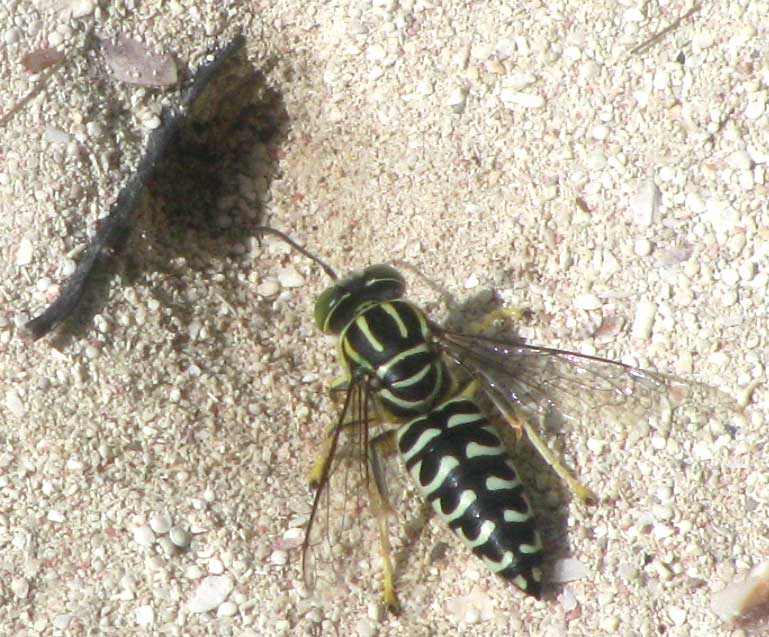Excerpts from Jim Conrad's
Naturalist Newsletter

from the June 26, 2011 Newsletter issued from Mayan Beach Garden Inn 20 kms north of Mahahual; Caribbean coastal beach and mangroves, ~N18.89°, ~W87.64°, Quintana Roo state, MÉXICO
SAND WASPS
Flitting above the sand on paths between buildings here you see a certain kind of wasp frequently landing and digging little pits. The wasp digs with such gung-ho obsessiveness that damp sand sprays several inches behind it. Typically the digging breaks off in a few seconds, though, the wasp returns to flying back and forth above the sand, then lands again and digs a few more seconds scattering more sand. This, again and again.
That's something you see nearly every day here, but lately there was a new twist. A wasp landed at a pit and instantly began moving very fast BACKWARD away from the hole. Then it'd fly around a bit, land, and move backward again. Several wasps were circulating in the area and anthropomorphically it seemed to me as if the digging wasp were trying to draw attention to the pit. You can see one just landed at its hole, moments before beginning its backward rush, at the top of this page.
You can almost guess the name volunteer identifier Bea in Ontario ferreted out for this sand-digging wasp: sand wasp*. But of course there are jillions of kinds of sand wasp. Probably what's in the picture is a member of the Bembicini tribe of crabronid wasps, of which aabout 20 genera are recognized, and many species. Wasps in this group dig short, simple burrows in which they lay an egg, and provision the burrow with sting-stunned prey, which the wasp larva feed on when the egg hatches. The different wasp species vary in their preferences for kind of prey, kind of sand, etc.